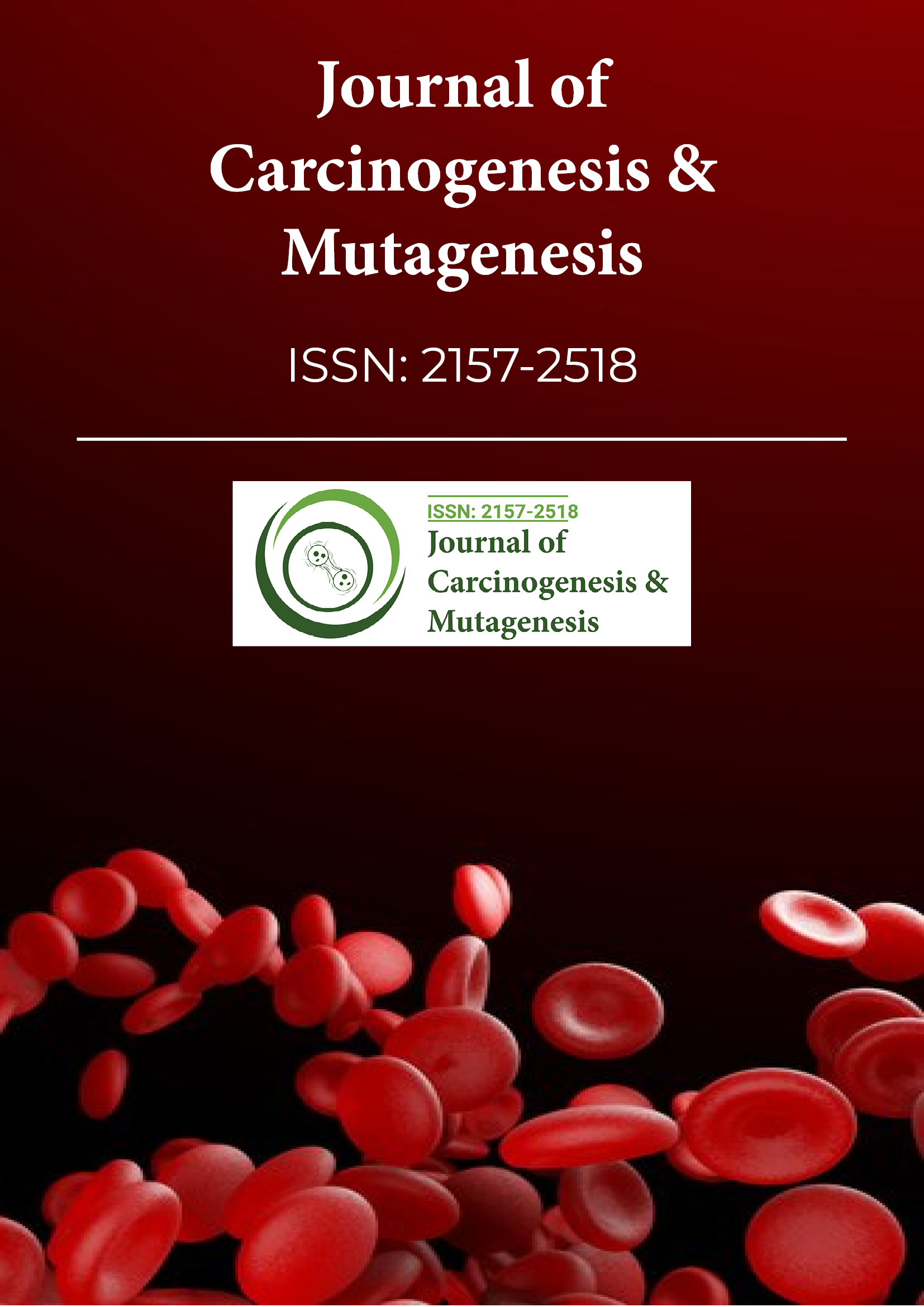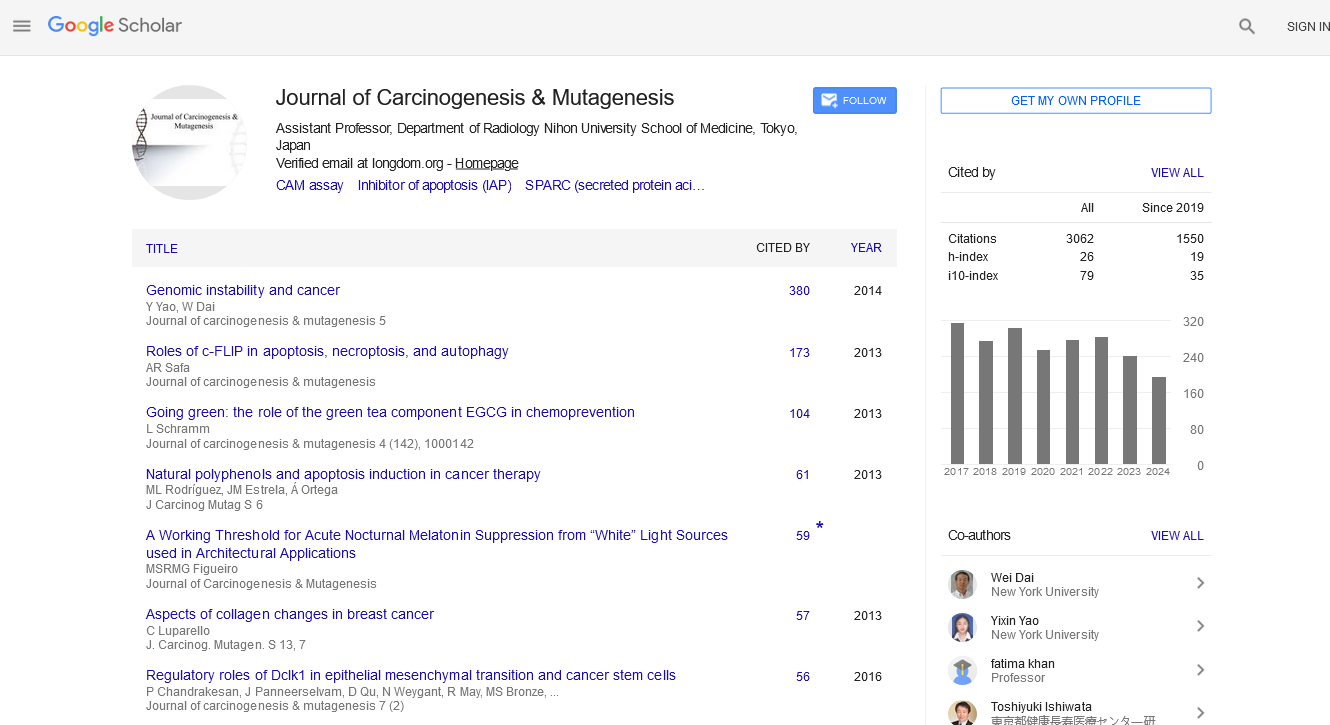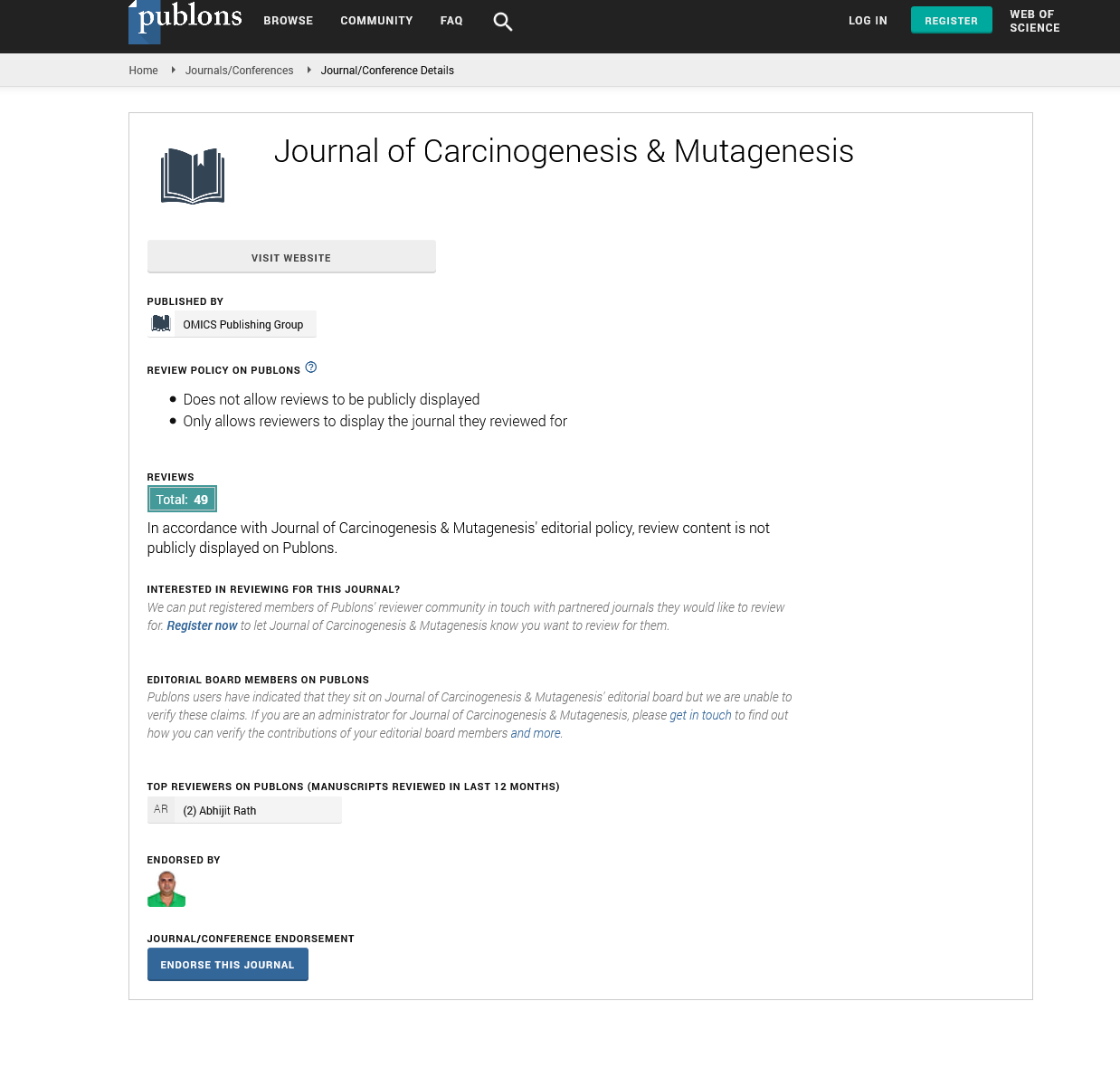Indexed In
- Open J Gate
- Genamics JournalSeek
- JournalTOCs
- Ulrich's Periodicals Directory
- RefSeek
- Hamdard University
- EBSCO A-Z
- OCLC- WorldCat
- Publons
- Geneva Foundation for Medical Education and Research
- Euro Pub
- Google Scholar
Useful Links
Share This Page
Journal Flyer

Open Access Journals
- Agri and Aquaculture
- Biochemistry
- Bioinformatics & Systems Biology
- Business & Management
- Chemistry
- Clinical Sciences
- Engineering
- Food & Nutrition
- General Science
- Genetics & Molecular Biology
- Immunology & Microbiology
- Medical Sciences
- Neuroscience & Psychology
- Nursing & Health Care
- Pharmaceutical Sciences
Perspective - (2025) Volume 16, Issue 2
Organisation of Rehabilitation in Oncology Patientsâto Whom? When? to What Extent? the Oncologist's View
Robert Wiraszka*Received: 28-Nov-2023, Manuscript No. JCM-23-24184; Editor assigned: 01-Dec-2023, Pre QC No. JCM-23-24184 (PQ); Reviewed: 16-Dec-2023, QC No. JCM-23-24184; Revised: 12-Mar-2025, Manuscript No. JCM-23-24184 (R); Published: 20-Mar-2025, DOI: 10.35248/2157-2518.25.16.469
Abstract
Malignant tumours are the second (after cardiovascular diseases) cause of morbidity and mortality. Thus, they are also a very common cause of disability and inability to work. Oncological treatment (surgery, radiotherapy, chemotherapy) reduces the quality of life of oncology patients through its multiple effects causing structural damage and impairment of the functions of vital systems and organs, as well as through its mutilating effects. Thus, the role of rehabilitation as a method capable of restoring function is becoming increasingly important in this group of patients. The introduction of so-called organ-saving treatment methods minimal surgery, conformal radiotherapy or immunotherapy has not significantly changed this situation either.
Keywords
Oncology; Rehabilitation; Cancer survivorship; Disability
Introduction
Oncological treatment includes not only 'immediate' sequelae resulting from therapeutic amputations within various organs and systems. There are also distant effects such as lymphatic circulation disorders, radiation reactions, difficult to heal wounds or fistulas especially in the irradiated field, contractures, muscle weakness or peripheral sensory disorders. Subsequently, changes in the psyche such as burnout/fatigue syndrome, depression or organic mental changes should also be cited.
Research into the organ and systemic complications of oncological treatment has led to the emergence of new medical specialities such as cardiooncology and nephrooncology. Patients who formerly did not live to see the onset of late complications of treatment, today thanks to advances in oncology require the implementation of appropriate treatments for these complications. This progress also applies to rehabilitation.
Description
In general, natural forms of exercise (walking, cycling and swimming) are recommended in the rehabilitation of oncology patients, especially if they correlate with the patients' natural interests and if they enjoy doing them. Of course, individualisation is necessary here a patient recently treated for rectal cancer or prostate cancer should be directed to exercise in a swimming pool rather than in a sitting position. Patients with intestinal or urinary fistulas (stomas) can take part in swimming pool activities, but only after a minimum of 8 weeks after their removal. 8 weeks after their emergence and they must not use reusable stoma bags. Patients with current or suspected bone metastases must not perform weight bearing exercises as these may result in pathological fractures. It is not uncommon for many of the bone metastatic lesions (although not exclusively) to be initially clinically silent. The clinical situation theoretically requires that oncology patients, if they were to be referred for rehabilitation, would need to have a full diagnostic panel performed prior to qualification that takes into account the possibility of detecting clinically silent foci of disease or the emergence of various complications. In practice, it is not possible to perform such extensive diagnostics hence the recommendations for extreme caution in rehabilitation.
It is considered that patients with locally advanced and highly malignant oncological processes and highly dynamic disease should not undergo physical therapy, especially in the treated area and adjacent areas. When determining indications for rehabilitation, the principal diagnosis is also important. While there are no contraindications for rehabilitation and massage of the upper limb due to oedema in the course of breast cancer, patients with oedema of the limb in the course of melanoma should already be approached with great caution.
It is believed that local rehabilitation methods (e.g. massage, TENS) are safer for oncology patients than those acting systemically (mud, magnetotherapy, sauna, cryochamber). It is important to bear in mind the local negative effects of the treatment, e.g. the hypersensitivity caused by the treatment may negatively affect the consequences of the TENS stimulation applied. In each case, however, the decision on the type of rehabilitation must be individualised.
When qualifying for rehabilitation, morphology monitoring is necessary. Thrombopenia less than 50,000/mm3 means that potentially traumatic rehabilitation methods cannot be included; leukopenia less than 3,000/mm3 means that infection promoting methods (hydrotherapy, swimming pool) are excluded; and anaemia with an Hg level of less than 10 g/dl rules out intensive exercise (kinesiotherapy).
The types of rehabilitation in oncology are as follows:
• Preventive-its aim is prevention, to prevent the negative effects of oncological treatment by reducing the risk of complications.
• Restorative-aimed at improving the quality of life and returning patients to their previous fitness after treatment (e.g. muscle exercises in patients treated with corticosteroids).
• Maintenance-aimed at maximising the improvement in function of the patient in a new health situation (e.g. learning to use a prosthesis).
• Palliative-aimed at improving the quality of life in the terminal period of the disease by ensuring independence for as long as possible.
There are three stages of rehabilitation management:
• Inpatient (postoperative).
• Outpatient.
• Sanatorium.
Properly managed rehabilitation must be:
• Appropriately early-ideally it should be initiated at the very beginning of treatment.
• Continuous-must involve all stages of treatment and then follow-up after treatment.
• Systematic-by performing the prescribed exercises in a regular way for the required time.
• Appropriately intensive-it must both meet the criteria of a physiological stimulus and be adapted to the capacity of the damaged systems and tissues.
• Comprehensive-should include physical, psychosocial, occupational rehabilitation.
• Universal-should apply to all patients as far as possible, but depending on the type and progression of the disease.
Properly managed rehabilitation should:
• Prevent negative consequences of the disease and treatment.
• Alleviate existing effects of the disease and its treatment.
• Improve quality of life.
• Support oncological treatment.
When deciding on the implementation of rehabilitation methods, the following should be taken into account:
• The type, stage and malignancy of the tumour.
• The location of the disease.
• Stage and nature of oncological treatment.
• The incentive effect of the rehabilitation method used.
The basis of medical rehabilitation in oncology is physiotherapy, which includes kinesitherapy and physical therapy. Kinesitherapy is essential and the selection of exercises itself depends on the functional deficit, as most of the negative consequences of oncological treatment requiring the implementation of rehabilitation are functional in nature. Therefore, taking into account the nature and progression of the disease, the most commonly used exercises are passive, active with relief, active with resistance, relaxation and breathing exercises.
When it comes to the use of physical therapy, there are more doubts here, mainly related to the fear of whether the rehabilitation method used will prove to be too strong a stimulus for the body and will not stimulate the oncological process in the weakened organism. The lack of conclusive data in the medical literature and objective reference points means that most oncologists do not recommend physical therapy during and after oncological treatment for safety reasons. However, it should be noted that there is no justification for maintaining a uniform 5-year grace period (time without rehabilitation) for all patients from the end of oncological treatment.
Past radiotherapy can promote damage to the skin, bones, muscles, tendons and ligaments in the irradiated field. This means limiting methods that use high resistance or long levers. In oncology patients, great caution is also recommended in the use of redressive exercises (especially for contractures).
Self-massage, limb positioning, exercise, compression therapy, manual lymphatic drainage, intermittent pneumatic compression, complex physiotherapy and complex decongestive therapy can be used to reduce swelling of the limb in women after mastectomy (methods were arranged according to their increasing effectiveness).
Another issue is the management of rehabilitation in people with scars in the process of healing. The aim should be to make the scars mobile, moveable over the ground, flexible and therefore they should be mobilised aiming for maximum mobility.
Rehabilitation can also prevent osteoporosis and/or reduce its consequences (e.g. reduce the risk of bone fractures). Bone remodelling is best stimulated by rhythmically performed exercises in the axial direction of bone loading. The most common position is standing, and recommended exercises include light jumping, marching in place and exercises on special vibration platforms. In people who already have osteoporosis, it is recommended to carry out exercises in water or in weight bearing.
A separate mention should be made of rehabilitation in terminal patients. It is provided by home hospices and palliative care units. It includes relaxation techniques (occupational therapy, music therapy); speech therapy (speech disorders, swallowing reflex re-education); psychology (education, visualisation, autosuggestion, biofeedback); massage (reduction of tension, increase in lymph and blood flow); kinesitherapy (exercises: active, passive, activepassive, isometric) and also physical treatments (TENS, diadynamics, hydrotherapy, phototherapy, thermotherapy).
Conclusion
• Rehabilitation in oncology patients is increasingly used at all stages of treatment, despite previous long-standing concerns about its negative impact on patients.
• Such rehabilitation requires prior very thorough qualification of patients (with a number of diagnostic tests to exclude active cancer).
• Such rehabilitation must be highly individualised, which makes it difficult to select a homogeneous group in one centre and at one time (such an organisation is the most effective).
Citation: Wiraszka R (2025) Organisation of Rehabilitation in Oncology Patients-to-Whom? When? to What Extent? The Oncologist's View. J Carcinog Mutagen. 16:469.
Copyright: © 2025 Wiraszka R. This is an open-access article distributed under the terms of the Creative Commons Attribution License, which permits unrestricted use, distribution, and reproduction in any medium, provided the original author and source are credited.


